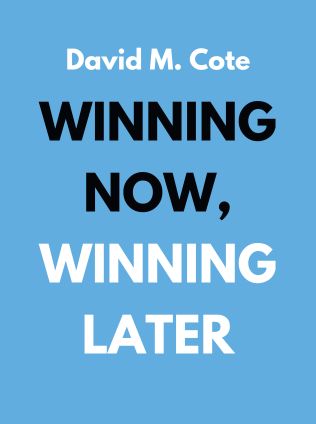
Winning Now, Winning Later
How Companies Can Succeed in the Short Term While Investing for the Long Term
By David M. Cote
Published 07/2021
About the Author
David M. Cote is the Executive Chairman of Vertiv Holdings Co, a global data-center products and services provider; a member of the Aspen Economic Strategy Group; and on the Boards of the Council on Foreign Relations and the Conference of Montreal. Previously, as Chairman and CEO of Honeywell for 16 years, he grew the company’s market capitalization from around $20 billion to nearly $120 billion. Recognized as one of the World’s Best CEOs by Barron’s for five straight years (2013–2017), Cote’s leadership principles and strategies are highly regarded in the business world.
Main Idea
Winning Now, Winning Later: How Companies Can Win in the Short Term While Investing for the Long Term by David M. Cote addresses the common dilemma faced by business leaders: balancing short-term performance with long-term growth. Cote challenges the notion that these goals are mutually exclusive and provides a framework for achieving both. By adopting bold operational reforms and counterintuitive leadership practices, Cote demonstrates how leaders can deliver strong results today while setting the stage for future success.
Table of Contents
- Introduction
- Identify Bias
- Cultivate Connection
- Choose Courage
- Apply Across the Talent Lifecycle
Introduction
The introduction sets the stage by highlighting the pervasive issue of short-termism in business. Cote recounts his experience taking over Honeywell, a company plagued by years of short-term focused decisions. He emphasizes that leaders can achieve both short-term and long-term goals through disciplined execution and strategic planning. The key lies in rejecting the false dichotomy that one must be sacrificed for the other.
“The notion that there is no way to pursue long- and short-term goals at the same time, and therefore leaders have no choice but to embrace short-termism, is one of the most pernicious beliefs circulating in business today.” - David M. Cote
Identify Bias
This section focuses on self-awareness as the foundation for identifying bias. The authors introduce the FranklinCovey Identity Model, which explores how personal identity influences and is influenced by bias. They explain that our identities are shaped by various factors, including information, education, context, culture, innate traits, and experiences.
“Increased self-awareness can enable us to identify our biases. When we build self-awareness, we stop acting automatically and start making better decisions.” - Pamela Fuller
The chapter discusses bias traps, such as information overload, feelings over facts, and the need for speed, which can exacerbate biased thinking. Strategies for identifying and mitigating these traps include mindfulness practices, pausing to describe situations, and setting intentions to counteract bias.
Sign up for FREE and get access to 1,400+ books summaries.
You May Also Like
Rich Dad Poor Dad
What the Rich Teach Their Kids About Money - That the Poor and Middle Class Do Not!
By Robert T. KiyosakiFreakonomics
A Rogue Economist Explores the Hidden Side of Everything
By Steven D. Levitt and Stephen J. DubnerThe Lean Startup
How Today's Entrepreneurs Use Continuous Innovation to Create Radically Successful Businesses
By Eric RiesWho Moved My Cheese?
An Amazing Way to Deal with Change in Your Work and in Your Life
By Spencer Johnson, M.D.Factfulness
Ten Reasons We're Wrong About the World – and Why Things Are Better Than You Think
By Hans RoslingMake Your Bed
Little Things That Can Change Your Life...And Maybe the World
By William H. McRaven



















